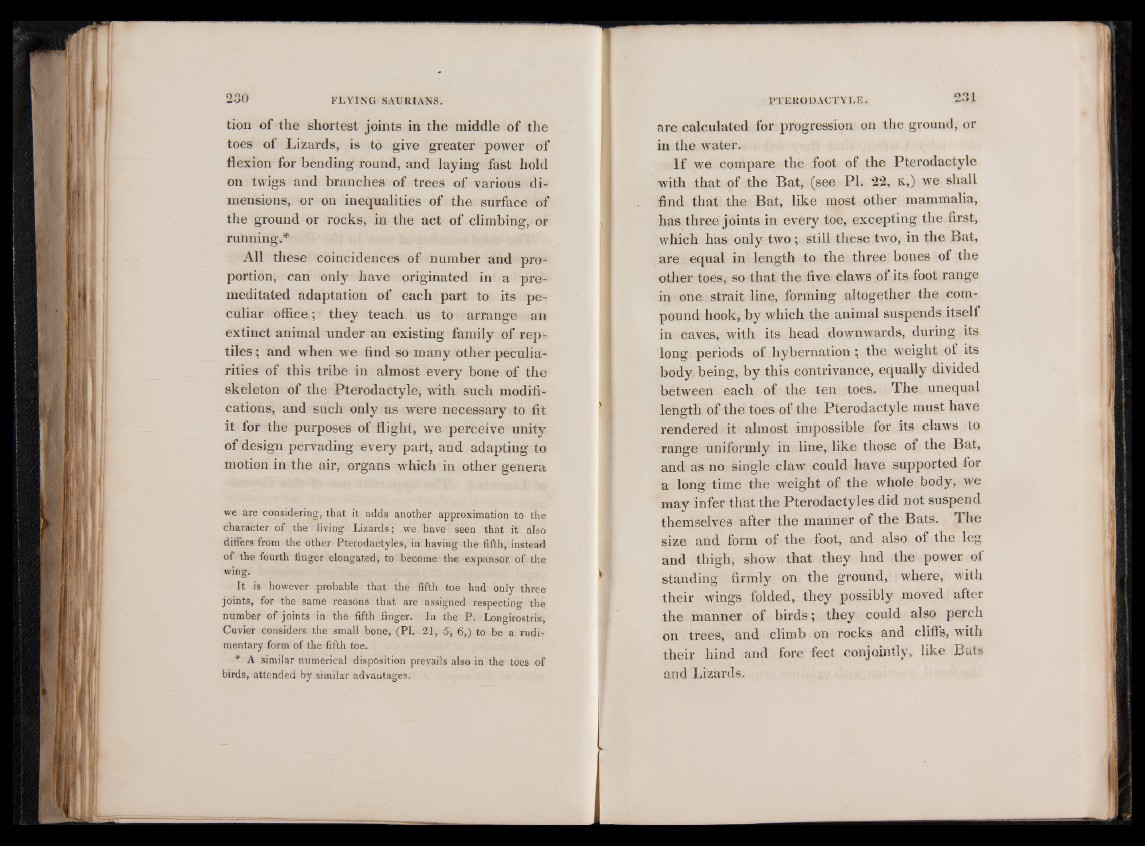
tion of the shortest joints in the middle of the
toes of Lizards, is to give greater power of
flexion for bending round, and laying fast hold
on twigs and branches of trees of various dimensions,
or on inequalities of the surface of
the ground or rocks, in the act of climbing, or
running.*
All these coincidences of number and proportion,
can only have originated in a premeditated
adaptation of each part to its peculiar
office; they teach us to arrange an
extinct animal under an existing family of reptiles
; and when we find so many other peculiarities
of this tribe in almost every bone of the
skeleton of the Pterodactyle, with such modifications,
and such only as were necessary to fit
it for the purposes of flight, we perceive unity
of design pervading every part, and adapting to
motion in the air, organs which in other genera
we are considering, that it adds another approximation to the
character of the living Lizards; we have seen that it also
differs from the other Ptérodactyles, in having the fifth, instead
of the fourth finger elongated, to become the expansor of the
wing.
It is however probable that the fifth toe had only three
joints, for the same reasons that are assigned respecting the
number of joints in the fifth finger. In the P. Longirostris,
Cuvier considers the small bone, (PI. 21, 5, 6,) to be a rudimentary
form of the fifth toe.
* A similar numerical disposition prevails also in the toes of
birds, attended by similar advantages.
are calculated for progression on the ground, or
in the water.
I f we compare the foot of the Pterodactyle
with that of the Bat, (see PI. 22, k,) we shall
find that the Bat, like most other mammalia,
has three joints in every toe, excepting the first,
which has only two ; still these two, in the Bat,
are equal in length to the three bones of the
other toes, so that the five claws of its foot range
in one strait line, forming altogether the compound
hook, by which the animal suspends itself
in caves, with its head downwards, during its
long periods of hybernation ; the weight of its
body being, by this contrivance, equally divided
between each of the ten toes. The unequal
length of the toes of the Pterodactyle must have
rendered it almost impossible for its claws to
range uniformly in line, like those of the Bat,
and as no single claw could have supported for
a long time the weight of the whole body, we
may infer that the Ptérodactyles did not suspend
themselves after the manner of the Bats. The
size and form of the foot, and also of the leg
and thigh, show that they had the power ot
standing firmly on the ground, where, with
their wings folded, they possibly moved after
the manner of birds ; they could also perch
on trees, and climb on rocks and cliffs, with
their hind and fore feet conjointly, like Bats
and Lizards.